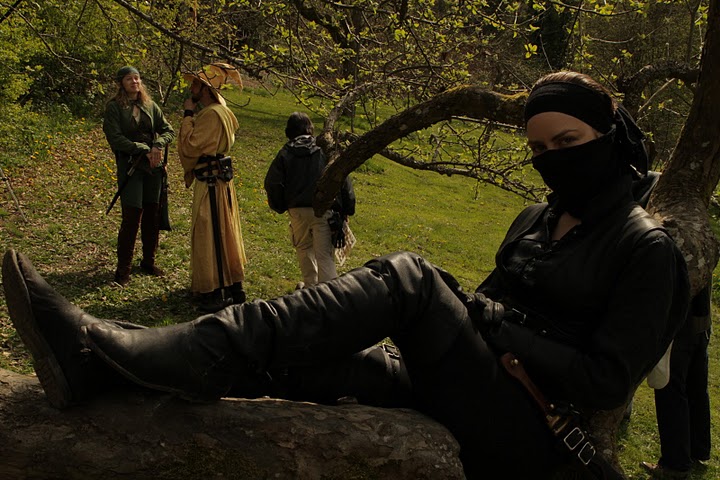
In which a betrayal is revealed. (SEASON FINALE)
JourneyQuest – Episode 7: Duplicitous Bastards
Learn more at the JourneyQuest official website!
Watch here for more content!

In which a betrayal is revealed. (SEASON FINALE)
Learn more at the JourneyQuest official website!
Watch here for more content!
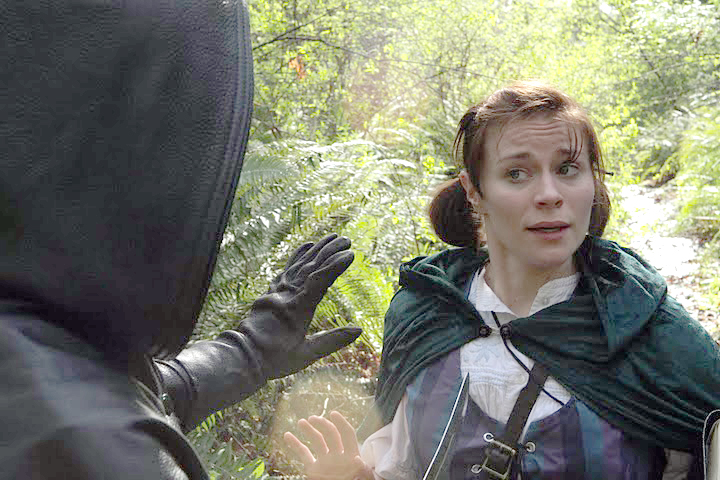
In which we learn who Wren is and why she is following the party.
Learn more at the JourneyQuest official website!
Watch here for more content!
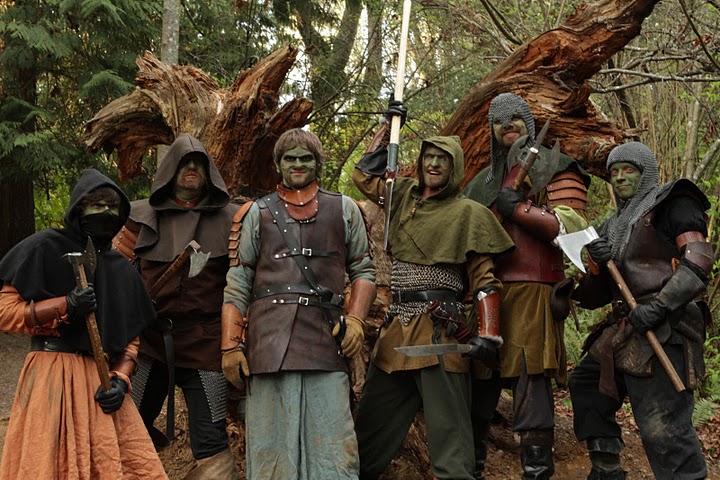
JourneyQuest is a fantasy comedy web series from the creators of The Gamers and The Gamers: Dorkness Rising. To learn more about the show or watch the series for free online, visit the official website. This article is part of a series that explore the world of JourneyQuest, its locales, myths, monsters, and characters.
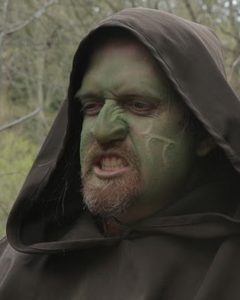
Modern Orcish and its sister tongue, Austral Orcish, are both derived from Orkaanz (also known as High Orcish). Orkaanz, a dead language, is one of the three original arcane languages and one of the hardest in the world to learn. Modern Orcish, by comparison, is vastly simpler, and doesn’t have nearly as many declensions or irregular verbs.
Modern Orcish—usually referred to simply as “Orcish,” since Austral Orcish is rarely encountered on this continent—is an inflected language with grammatical gender and adjectival agreement. The language does not use articles, and thus “the” or “a/an.” The declension of a noun, pronoun, or adjective indicates its grammatical case, number, and gender. Though the language contains prepositions, a word’s case often precludes the need for a preposition. Orcish also doesn’t rely heavily on pronouns, as verb conjugation is usually enough to indicate the voice, mood, tense, number, and person performing the action. It is an economical language for a blunt and decisive race.
The infinitive form of a first conjugation Orcish verb ends in “a” (ka = to kill, pekka = to defeat, viska = to gut). Attach the proper ending to indicate the person and number of the verb.
| Singular | Plural | |
| First Person | –g | –gax |
| Second Person | –s | –gas |
| Third Person | –k | –gek |
Thus, kag means “I kill” (ka + –g, first person singular) and pekkagak means “they defeat” (pekka + –gek, third person plural).
Past Active and Future Active are most easily indicated by attaching the prefixes ash– (Past Active) or ar– (Future Active) to the verb, and then conjugating accordingly. Thus, ashdobnagax means “we worked” (ash– + dobna [to work] + –gax), and arvansas means “you will understand” (ar– + vansa [to understand] + –s).
As in most languages, the Orcish “to be” (aa) is an irregular verb. Here it is in the Present, Past, and Future Active Voices.
| Singular | Plural | |
| First Person | aga | aggax |
| Second Person | aas | aggas |
| Third Person | aka | aggek |
| Singular | Plural | |
| First Person | ashag | ashax |
| Second Person | ashas | ashagas |
| Third Person | ashek | ashagek |
| Singular | Plural | |
| First Person | areg | areggax |
| Second Person | aras | areggas |
| Third Person | arek | araggek |
Modern Orcish has three genders: masculine, feminine, and neuter. How a verb declines indicates its role in the sentence and in the action being performed. For first declension verbs, most cases, regardless of gender, have only one ending. However, the nominative case has multiple endings for each gender, and the feminine accusative has one common alternate ending.
| Case | Singular | Plural |
| Nominative | –ul (–or, –k, –x) | –ulz |
| Genitive | –u | –urru |
| Dative | –o | –ors |
| Accusative | –udz | –uluz |
| Vocative | –o | –ors |
| Case | Singular | Plural |
| Nominative | –ad (–am, –ag) | –adz |
| Genitive | –ar | –arru |
| Dative | –ae | –aes |
| Accusative | –az (–adz) | –aruz |
| Vocative | –ae | –aes |
| Case | Singular | Plural |
| Nominative | –id (–ed, –d) | –idz |
| Genitive | –u | –urru |
| Dative | –o | –aes |
| Accusative | –udz | –uluz |
| Vocative | –o | –aes |
Hadzag doru. / Hadz.
“I hail you.” (Formal greeting) / “Hi.” (Informal greeting)
Skald aga. Djag skaldudz gadzkudz. Mathas nudz gadz ka.
“I am a bard. I have bardic immunity. You can’t kill me.”
Franzhag shugadzkit.
“I surrender unconditionally.”
Orkulz kogulz ek gazgulz aggek.
“Orcs are strong and smart.”
Duwuluz yakagek. Ekto humadz.
“Dwarves suck. So do humies.”
Karit nudz gadz!
“Don’t kill me!”
Translator’s note: There is no Orcish word for “please.”
Aka drur kelled ud no guro?
“Is that your atrocity-knife in my stomach?”
Klergul aas!
“You bastard!”
Chu ashkas nudz?!
“Why did you kill me?”
Vart zak abssudz!
“Go to hell!”
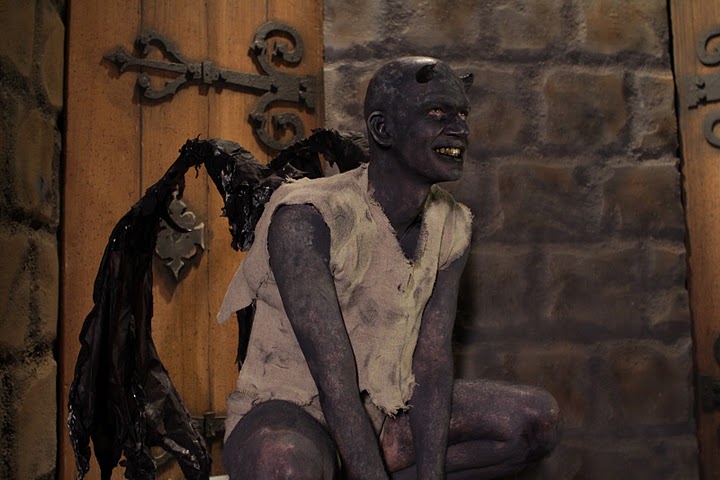
Perf blows another spell, Glorion encounters a gargoyle, and the orcs have a very bad day.
Learn more at the JourneyQuest official website!
Watch here for more content!
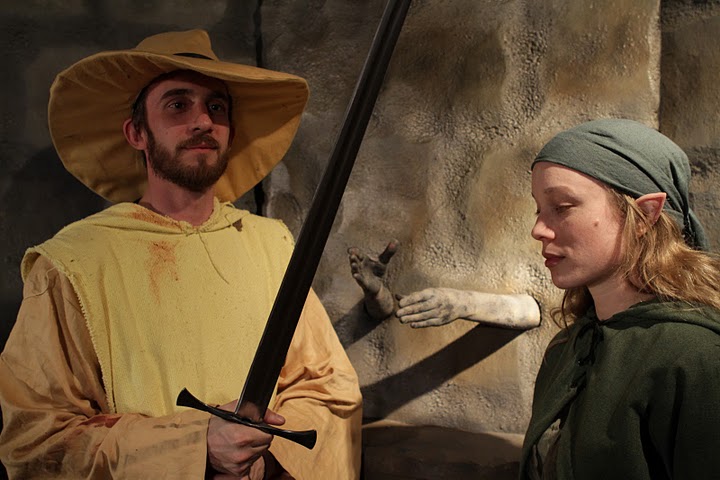
Perf goes on the run … with Nara’s destiny.
Learn more at the JourneyQuest official website!
Watch here for more content!
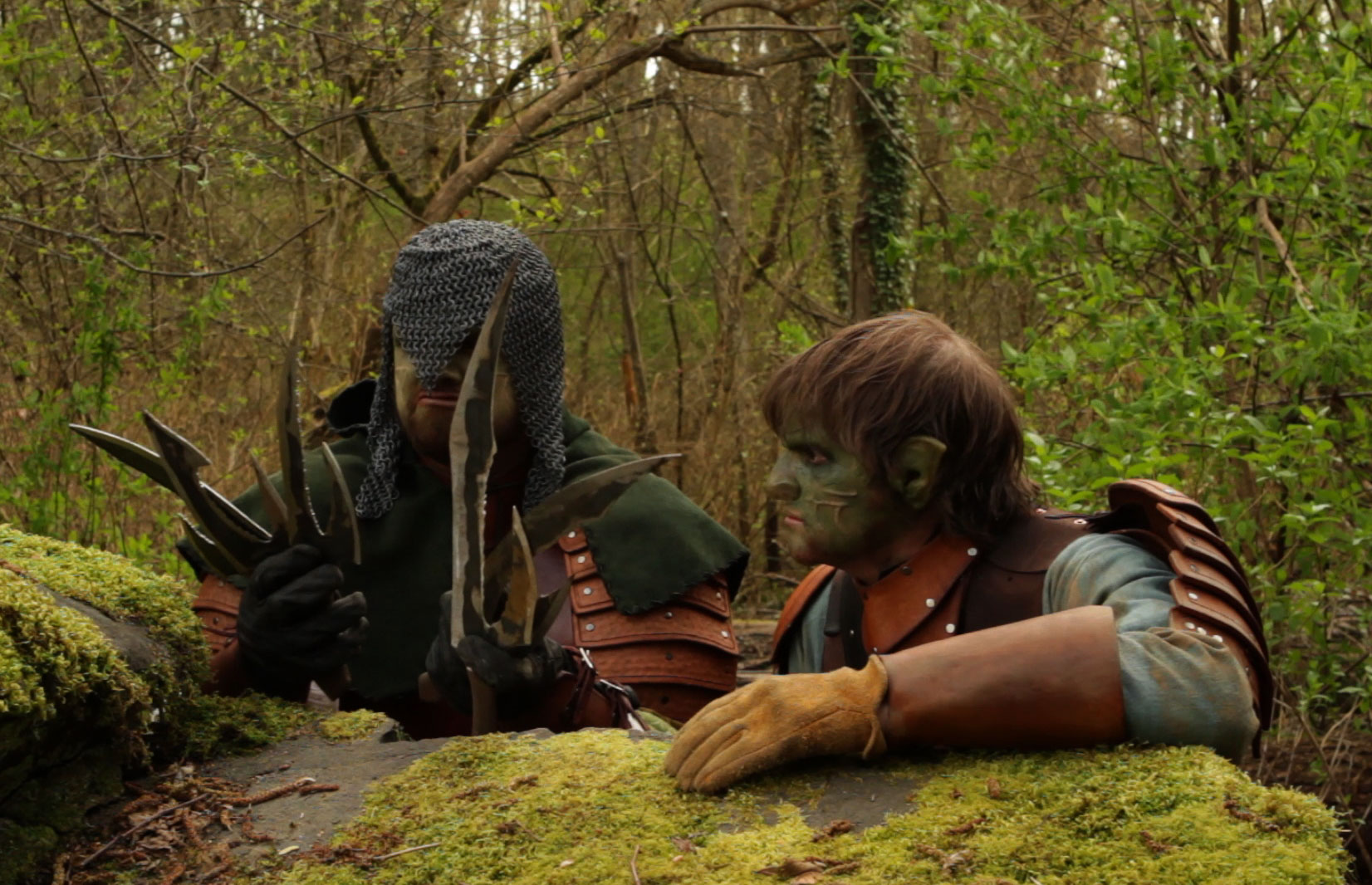
JourneyQuest is a fantasy comedy web series from the creators of The Gamers and The Gamers: Dorkness Rising. To learn more about the show or watch the series for free online, visit the official website. This article is part of a series that explore the world of JourneyQuest, its locales, myths, monsters, and characters.
There is perhaps no more iconic Orcish weapon than the vivdly named atrocity-knife (kelled in Orcish). Also known as flensers, hellshivs, and – most horribly – rape-knives, a war party of Orcs armed with these vicious, hideously tongued blades is instant nightmare fuel for the civilized races of Fartherall.
Atrocity-knives vary in length, from the size of a dagger to that of a short sword, and resemble an unholy cross between a lobster claw and a can opener. The serrated blade and puncturing hook make atrocity-knives brutal close-quarter weapons; the “atrocity” in the name is most often linked to the gruesome wounds the blades have been known to inflict. The hook on the knife can, in the hands of a skilled user, also be used defensively to entangle a hostile weapon or disarm an enemy. To that end, it’s not uncommon to see an Orc fighting with an atrocity-knife in one hand and a heavier melee weapon in the other. Even so, the knives’ tendency to break or stick in armor means they are not the primary weapon choice of most Orcs.
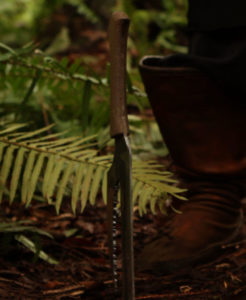 Most atrocity-knives are not made very strong material, and Orcs generally consider them disposable. As the knives tend to break in battle and/or in victims, smash-happy Orcs tend to go through a lot of them. Fortunately (for an Orc, at least) atrocity-knives are not at all difficult to make; given adequate time and any suitable amount of scrap metal, an Orc with rudimentary blacksmithing skills can create a small bundle of knives.
Most atrocity-knives are not made very strong material, and Orcs generally consider them disposable. As the knives tend to break in battle and/or in victims, smash-happy Orcs tend to go through a lot of them. Fortunately (for an Orc, at least) atrocity-knives are not at all difficult to make; given adequate time and any suitable amount of scrap metal, an Orc with rudimentary blacksmithing skills can create a small bundle of knives.
Why Orcs are so willing to carry frail (but still razor sharp) weapons into battle is curious, considering how painstaking they usually are with the care and quality of their weapons. One theory is that the practice is a holdover from the Orcs’ pre-nomadic scavenger days, when the only crafted materials they had were what they stole or salvaged from other races. It’s an interesting theory, since the Orcs as a race don’t care to remember that part of their history, and the jagged and oft blackened blades of the atrocity-knives closely resemble the Orcish scrapaxes and piecemeal armor of ages past.
Interestingly enough, there have been reports of some tribes using masterwork atrocity-knives that are sturdy and ever keen and can punch through plate. Speculation abounds that some sort of magic is involved in their creation. Rumors from the border kingdoms suggest that these master knives are forged rather than cut, and are cooled not in a blacksmith’s bucket but in a captive’s belly. Then again, these are only rumors, and the border kingdoms’ antipathy towards Orcs is well documented.
Even more curious are certain accounts of traders and peddlers friendly with some of the Orcish tribes in the Afterlands (these would be the more traditional, nomadic Orcs, not the modernists, who have consider atrocity-knives an outdated and hindering aspect of their culture, and have thrown them away along with ritual facial scarring). According to these reports, most Orcs don’t rely on their atrocity-knives except as a last resort since they’re unreliable in combat. Supposedly, the reason they wear them is psychological—they scare the living jibblie-crap out of the other races. Indeed, often all it takes is for an Orc to draw his atrocity-knife to get a clamp-lipped captive to start talking, or a stingy merchant to suddenly drop his prices.
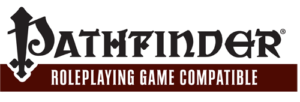 Atrocity-Knife Game Information
Atrocity-Knife Game Information
Cost: 5 sp
Dmg (S): 1d3
Dmg (M): 1d4
Critical: 19–20/×3
Range: –
Weight: 1 lb.
Type: P or S
A wicked blade that is cheap, defensive, and potentially lethal with the price of it being somewhat easily broken in battle. With an atrocity-knife, you get a +2 bonus on Combat Maneuver Checks to sunder an enemy’s weapon. On an attack roll of natural 1 there is a 50% chance the weapon will break. Openly carrying an atrocity-knife grants you a +2 fear bonus to Intimidate checks.
Compatibility with the Pathfinder Roleplaying Game requires the Pathfinder Roleplaying Game from Paizo Publishing, LLC. See http://paizo.com/pathfinderRPG for more information on the Pathfinder Roleplaying Game. Paizo Publishing, LLC does not guarantee compatibility, and does not endorse this product.
Pathfinder is a registered trademark of Paizo Publishing, LLC, and the Pathfinder Roleplaying Game and the Pathfinder Roleplaying Game Compatibility Logo are trademarks of Paizo Publishing, LLC, and are used under the Pathfinder Roleplaying Game Compatibility License. Seehttp://paizo.com/pathfinderRPG/compatibility for more information on the compatibility license.
Pathfinder and associated marks and logos are trademarks of Paizo Publishing, LLC, and are used under license. See paizo.com/pathfinderRPG for more information on the Pathfinder Roleplaying Game.
Product Identity: The following items are hereby identified as Product Identity, as defined in the Open Game License version 1.0a, Section 1(e), and are not Open Content: All trademarks, registered trademarks, proper names (characters, locations, deities, etc.), dialogue, plots, storylines, locations, characters, artwork, photographs, and trade dress. (Elements that have previously been designated as Open Game Content are not included in this declaration.)
Open Content: Except for material designated as Product Identity (see above), the game mechanics of this Signal Fire Studios and Zombie Orpheus Entertainment article are Open Game Content, as defined in the Open Gaming License version 1.0a Section 1(d). No portion of this work other than the material designated as Open Game Content may be reproduced in any form without written permission.
Open Game License Version 1.0a
The following text is the property of Wizards of the Coast, Inc. and is Copyright 2000 Wizards of the Coast, Inc (“Wizards”). All Rights Reserved.
1. Definitions:
(a) “Contributors” means the copyright and/or trademark owners who have contributed Open Game Content;
(b) “Derivative Material” means copyrighted material including derivative works and translations (including into other computer languages), potation, modification, correction, addition, extension, upgrade, improvement, compilation, abridgment or other form in which an existing work may be recast, transformed or adapted;
© “Distribute” means to reproduce, license, rent, lease, sell, broadcast, publicly display, transmit or otherwise distribute;
(d) “Open Game Content” means the game mechanic and includes the methods, procedures, processes and routines to the extent such content does not embody the Product Identity and is an enhancement over the prior art and any additional content clearly identified as Open Game Content by the Contributor, and means any work covered by this License, including translations and derivative works under copyright law, but specifically excludes Product Identity.
(e) “Product Identity” means product and product line names, logos and identifying marks including trade dress; artifacts, creatures, characters, stories, storylines, plots, thematic elements, dialogue, incidents, language, artwork, symbols, designs, depictions, likenesses, formats, poses, concepts, themes and graphic, photographic and other visual or audio representations; names and descriptions of characters, spells, enchantments, personalities, teams, personas, likenesses and special abilities; places, locations, environments, creatures, equipment, magical or supernatural abilities or effects, logos, symbols, or graphic designs; and any other trademark or registered trademark clearly identified as Product identity by the owner of the Product Identity, and which specifically excludes the Open Game Content;
(f) “Trademark” means the logos, names, mark, sign, motto, designs that are used by a Contributor to identify itself or its products or the associated products contributed to the Open Game License by the Contributor
(g) “Use”, “Used” or “Using” means to use, Distribute, copy, edit, format, modify, translate and otherwise create Derivative Material of Open Game Content.
(h) “You” or “Your” means the licensee in terms of this agreement.
2. The License: This License applies to any Open Game Content that contains a notice indicating that the Open Game Content may only be Used under and in terms of this License. You must affix such a notice to any Open Game Content that you Use. No terms may be added to or subtracted from this License except as described by the License itself. No other terms or conditions may be applied to any Open Game Content distributed using this License.
3. Offer and Acceptance: By Using the Open Game Content You indicate Your acceptance of the terms of this License.
4. Grant and Consideration: In consideration for agreeing to use this License, the Contributors grant You a perpetual, worldwide, royaltyfree, non-exclusive license with the exact terms of this License to Use, the Open Game Content.
5. Representation of Authority to Contribute: If You are contributing original material as Open Game Content, You represent that Your Contributions are Your original creation and/or You have sufficient rights to grant the rights conveyed by this License.
6. Notice of License Copyright: You must update the COPYRIGHT NOTICE portion of this License to include the exact text of the COPYRIGHT NOTICE of any Open Game Content You are copying, modifying or distributing, and You must add the title, the copyright date, and the copyright holder’s name to theCOPYRIGHT NOTICE of any original Open Game Content you Distribute.
7. Use of Product Identity: You agree not to Use any Product Identity, including as an indication as to compatibility, except as expressly licensed in another, independent Agreement with the owner of each element of that Product Identity. You agree not to indicate compatibility or co-adaptability with any Trademark or Registered Trademark in conjunction with a work containing Open Game Content except as expressly licensed in another, independent Agreement with the owner of such Trademark or Registered Trademark. The use of any Product Identity in Open Game Content does not constitute a challenge to the ownership of that Product Identity. The owner of any Product Identity used in Open Game Content shall retain all rights, title and interest in and to that Product Identity.
8. Identification: If you distribute Open Game Content You must clearly indicate which portions of the work that you are distributing are Open Game Content.
9. Updating the License: Wizards or its designated Agents may publish updated versions of this License. You may use any authorized version of this License to copy, modify and distribute any Open Game Content originally distributed under any version of this License.
10. Copy of this License: You MUST include a copy of this License with every copy of the Open Game Content You distribute.
11. Use of Contributor Credits: You may not market or advertise the Open Game Content using the name of any Contributor unless You have written permission from the Contributor to do so.
12. Inability to Comply: If it is impossible for You to comply with any of the terms of this License with respect to some or all of the Open Game Content due to statute, judicial order, or governmental regulation then You may not Use any Open Game Material so affected.
13. Termination: This License will terminate automatically if You fail to comply with all terms herein and fail to cure such breach within 30 days of becoming aware of the breach. All sublicenses shall survive the termination of this License.
14. Reformation: If any provision of this License is held to be unenforceable, such provision shall be reformed only to the extent necessary to make it enforceable.
15. Copyright Notice
Open Game License v 1.0a Copyright 2000, Wizards of the Coast, Inc.
System reference Document. Copyright 2000, Wizards of the Coast, Inc.; Authors Jonathan Tweet, Monte Cook, Skip Williams, based on material by E. Gary Gygax and Dave Arneson.
Pathfinder RPG Core Rulebook. Copyright 2009, Paizo Publishing, LLC; Author: Jason Bulmahn, based on material by Jonathan Tweet, Monte Cook, and Skip Williams.
The Book of Experimental Might. Copyright 2008, Monte J. Cook. All rights reserved.
Tome of Horrors. Copyright 2002, Necromancer Games, Inc.; Authors: Scott Greene, with Clark Peterson, Erica Balsley, Kevin Baase, Casey Christofferson, Lance Hawvermale, Travis Hawvermale, Patrick Lawinger, and Bill Webb; Based on original content from TSR.
The Atrocity Knife. Copyright 2010, Zombie Orpheus Entertainment, LLC; Authors: Matt Vancil and Jamie Chambers.
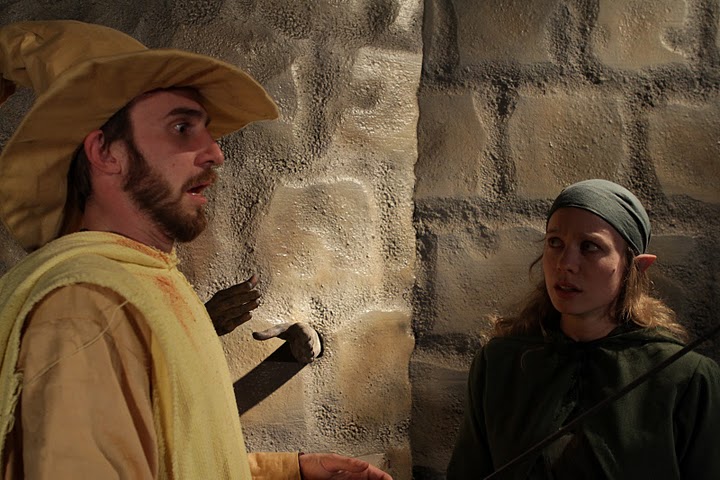
JourneyQuest is a fantasy comedy web series from the creators of The Gamers and The Gamers: Dorkness Rising. To learn more about the show or watch the series for free online, visit the official website. This article is part of a series that explore the world of JourneyQuest, its locales, myths, monsters, and characters.
Perf: “So … The Temple of All Dooms? Really? All of them?”
Carrow: “Well, not likely. But the ‘Temple of Some Dooms’ doesn’t have quite the same punch.”
It is said that deep within the heart of the Temple of All Dooms, beyond the reckoning of all mortal fools, the mythical Sword of Fighting waits to be drawn at the end of a gauntlet of impossibly deadly puzzles.
The Temple of All Dooms, as one might guess, contains more than a few traps. Indeed, it takes its name from the no doubt apocryphal legend that it contains an infinite number of lethal chambers, the “All Dooms” suggested in the name. Supposedly, this is so that any adventurers seeking the Sword of Fighting—no matter how brave nor wise nor crafty they may be—will, via process of elimination, meet at least one doom they cannot overcome. However, this is widely agreed upon to be an embellishment, as practical engineering and the limits of arcane space dilation make the construction of an infinite dungeon impossible. That said, no one has any idea just how many dooms the Temple of All Dooms contains, nor the nature of said dooms, other than that each and every one is lethal.
The construction date of the Temple is unknown, though most scholars place its creation within the century after the Day of No Sun and the Collapse of Archaiad. Records from that period are fragmented, of course, as very little survived the catastrophic collapse of that great human empire some 3,300 years ago. Due to the seismic realignments that wracked the continent and the massive waves of migration, not to mention the frenzied screaming and running about, the surviving cartography of the time is unreliable; thus, the exact location of the Temple, built as it was using Archaian maps and astronomy, is unknown.
It is widely believed, however, that the Temple of All Dooms lies undiscovered somewhere in the Afterlands, that vast and scarcely-populated quarter of the continent beyond the boundaries of human civilization. Even during the height of Archaiad, human presence there was limited. Despite the Empire’s best efforts, humanity could never gain a strong enough foothold to flourish as they have elsewhere on the continent—the expansive, open land; harsh climate and unproductive soil; and the native populations of xenophobic elves and nomadic orcs all contributed to a proportionally small human population. When the empire fell, it left its scattered attempts to humanize the Afterlands spread across the rapidly changing landscape. Somewhere among these scattered ruins is where the Temple allegedly resides.
Though scholars cannot agree on where the temple is, they can agree on why it was build: To protect—and some would say contain—the Sword of Fighting. Whether the Sword predates the Fall of Archaia is unknown; its exact role, if any, in the empire’s collapse can only be guessed at. The Sword itself, however, is considered a linchpin artifact—that is, a trigger object, deeply tied to a particular fate and destiny that will commence the moment it is removed from the Temple. Indeed, it is widely believed that the drawing of the Sword will provoke calamitous events similar in nature to those that accompanied the Day of No Sun. This would explain why the Temple’s architects, those newly-minted refugees from an empire dying rather noisily in a sudden wave of fire and pain, would take all steps necessary to insure the same damn thing didn’t happen again. And since they didn’t dare destroy the sword, they hid it in the center of a labyrinth full of easily-triggered fatalities. By all accounts, the Temple’s architects did their job phenomenally well. If the Temple has been found, the Sword has certainly not been retrieved, as no one has ever returned to brag about it. And so, the Temple of All Dooms and its heavily-guarded treasure have, undisturbed, faded into history.
Modern folklore has regionalized the myth of the Sword. What supposedly happens when the Sword is drawn varies from region to region. According to local legends, the drawing of the Sword in the Temple of All Dooms will signal everything from the toppling of an evil regime to an especially bountiful harvest of potatoes.
Over the centuries, the legendary lost temple and its mythical treasure have inspired their fair share of adventurers and explorers. And over the centuries, many hundreds of said adventurers have claimed to have found the ruins of the Temple. None of these claims have ever stood up to any scrutiny, however; apparently, the discovery of any suitably large and dangerous collection of Archaian ruins—whether in the Afterlands or not—is enough to get most any archaeological site declared a Temple of All Dooms, regardless of the presence of any actual treasure or any actual dooms (excavation injuries don’t count). In fact, according to the Cartographers Guild, no fewer than 400 False Temples have been discovered, examined, and discredited. However, that has not in any way curbed the zeal of adventure-seeking explorers, or their propensity to declare any pile of crumbling mortar to be the Temple.
This JourneyQuest article by Zombie Orpheus Entertainment, LLC and presented by Signal Fire Studios LLC is licensed under a Creative Commons Attribution-NonCommercial-ShareAlike 3.0 Unported License. Permissions beyond the scope of this license may be available at www.journey-quest.com/rights.
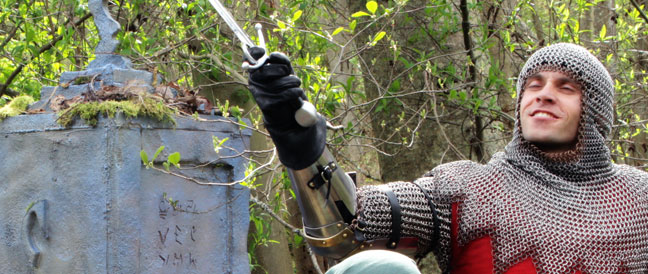
A river is battled! Orcish grammar is debated! The Journey continues … but what about the Quest?
Learn more at the JourneyQuest official website!
Watch here for more content!
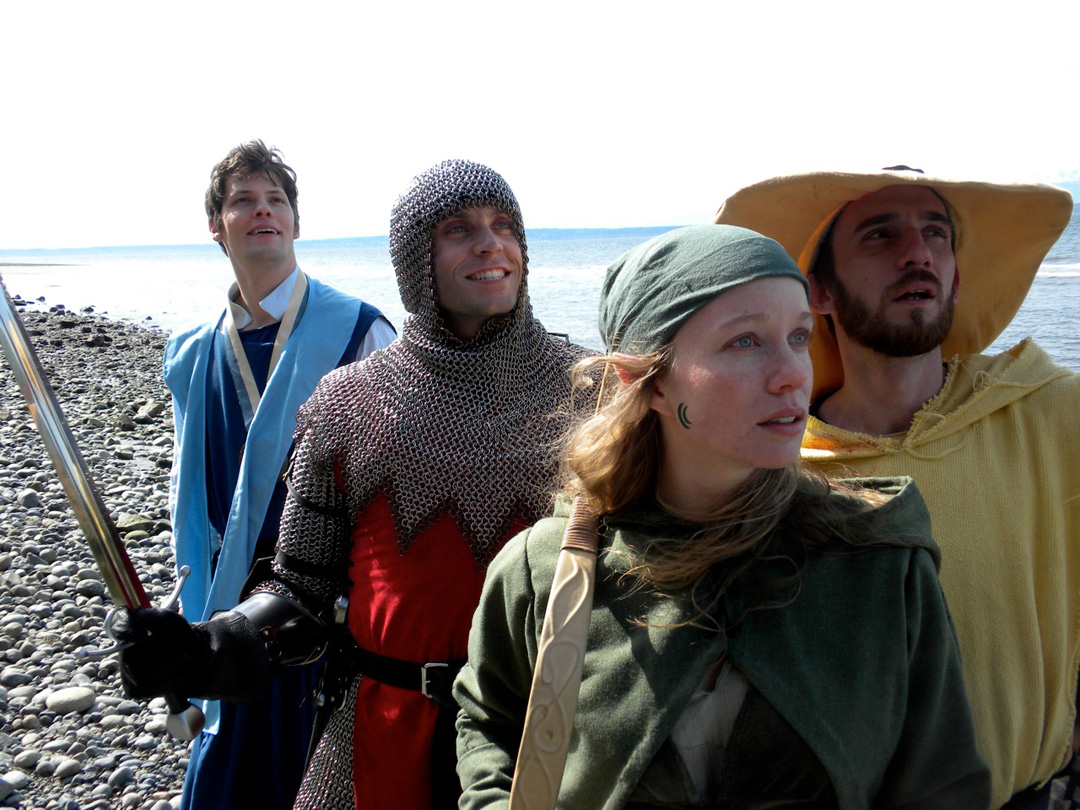
Is your Quest in need of a little Journey? (No, I’m not referring to the song those Glee kids sing all the time.) Or perhaps your Journey could use some Quest. (No, that is not a dishwasher detergent.) I speak, of course, of JourneyQuest — the new fantasy-comedy web series from Dead Gentlemen Productions (The Gamers: Dorkness Rising) and Zombie Orpheus Entertainment. Episodes One & Two are available to watch right here, right now. So instead of anymore boring introductory text just scroll down and start watching!
Keep your eyes open for exciting announcements regarding JourneyQuest coming soon!